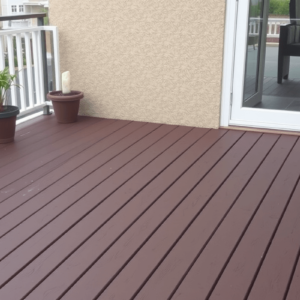Comparing Costs: Composite vs Traditional Fencing
Introduction
When it comes to choosing a fence for your property, the decision can be overwhelming due to the variety of materials available on the market. Composite fencing has emerged as a popular alternative to traditional wood, vinyl, and metal fences. This article delves into an in-depth analysis of the initial setup costs, maintenance expenses, durability, and longevity of composite fencing compared to its traditional counterparts. By understanding these factors, homeowners can make informed decisions that align with their budget and long-term needs.
Initial Setup Costs
The initial cost of installing a fence is often the first consideration for homeowners. Composite fencing typically comes with a higher upfront cost compared to traditional materials. For instance, the average cost of a composite fence ranges from $20 to $40 per linear foot, whereas a wood fence might cost between $15 to $25 per linear foot, and vinyl fences fall within the range of $10 to $30 per linear foot. Metal fences, such as aluminum or steel, usually start at around $25 per linear foot. However, the exact cost depends on several factors including material quality, design complexity, and local labor rates. Therefore, when considering the initial setup costs, it’s crucial to factor in not just the price per foot but also the overall project cost which includes delivery, installation, and any additional features like gates or decorative elements.
Maintenance Expenses
Maintenance costs over time can significantly impact the overall cost-effectiveness of a fence. Composite fencing is often touted for its low-maintenance requirements. Unlike wood, which requires regular painting or staining to prevent rot and decay, composite materials are resistant to moisture, insects, and mold, reducing the need for ongoing upkeep. Vinyl and metal fences also offer low maintenance, but they may require occasional cleaning and minor repairs. According to a study by the National Association of Home Builders, the annual maintenance cost for a composite fence is estimated at around $0.50 to $1.00 per linear foot, while wood fences can cost up to $2.00 per linear foot annually. This difference in maintenance expenses can accumulate over the years, making composite fencing a more cost-effective option in the long run.
Durability and Longevity
Durability and longevity are critical factors in determining the overall value of a fence. Composite fencing is designed to withstand harsh weather conditions and resist wear and tear better than traditional materials. It combines wood fibers with plastic resins, creating a robust and durable product that retains its appearance over time. In contrast, wood fences are susceptible to rotting, warping, and insect damage, especially in regions with high humidity or frequent rainfall. Vinyl and metal fences also exhibit good durability, but they may show signs of fading or corrosion under certain environmental conditions. A study published in the Journal of Materials Science found that composite fences can last up to 25 years with minimal maintenance, outperforming wood fences that typically last between 15 to 20 years, and vinyl fences that have a lifespan of about 20 to 30 years.
Long-Term Financial Implications
Considering the long-term financial implications, composite fencing emerges as a compelling choice despite its higher initial cost. The combination of low maintenance expenses and extended longevity means that the total cost of ownership over time is often lower for composite fences. Homeowners investing in a composite fence can expect fewer replacements and repairs, translating into significant savings. Additionally, the aesthetic appeal and resistance to damage enhance property value, potentially increasing the resale value of a home. In contrast, while wood fences may seem more affordable initially, the cumulative cost of regular maintenance and shorter lifespan can result in higher overall expenses.
Conclusion
In conclusion, the decision between composite and traditional fencing materials should consider not only the initial setup costs but also the long-term financial implications of maintenance, durability, and longevity. While composite fencing may come with a higher upfront expense, its superior performance and reduced maintenance needs make it a cost-effective solution in the long run. Homeowners looking for a low-maintenance, durable, and aesthetically pleasing fence should carefully weigh these factors before making their final decision.





Reviews
There are no reviews yet.